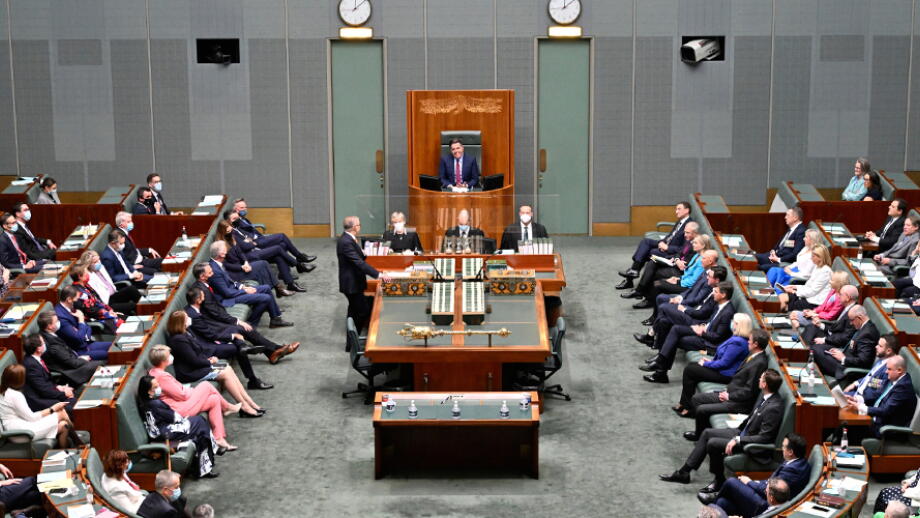In Short:
We prepared this submission in partnership with our research affiliates at the ANU College of Business and Economics (CBE) in response to the Workplace Gender Equality Agency Review consultation. The submission provides a summary of recent research completed by GIWL and CBE researchers on the gender pay gap reporting system in Australia.
Overview
There is increasing evidence that Australia is losing ground on its charge to achieve gender equality in workplaces and beyond. On contemporary measures of equality outcomes, Australia is only a mid-range performer and ranks below comparably wealthy nations. Australia ranks only 50th in the World Economic Forum’s Global Gender Gap Index, sliding from 24th in 2014. Much of this decline can be attributed to the workplace. Australia has been ranked in equal first place for women’s education since 2014 but has fallen from 14th in 2014 to 70th in 2021 for women’s economic participation and opportunity. Women now outnumber men in university graduations, but female dominated occupations continue to be lower paid than those that are male dominated, and women remain under-represented in senior and leadership positions.
Organisation-level pay equality legislation is an important complement to anti-discrimination laws, as many decisions on pay and the valuation of work are made by individual employers. Our research, conducted in April-June 2021, examined the effectiveness of Australia’s Workplace Gender Equality Act 2012 by drawing on stakeholder interviews, reviews of academic literature, government and industry reports, and cross-country comparisons of gender pay gap reporting systems in five other countries: France, South Africa, Spain, Sweden and the UK. Over eighty interviews were conducted internationally, with 17 interviews in Australia across four key stakeholder groups: government, gender equality advocates and experts, employers, and trade unions. The study identified 11 indicators of best practice in gender equality reporting, including measures around accountability, transparency, stakeholder consultation, intersectional data capture and coverage. When rated against each of the 11 indicators, Australia ranked joint last with the UK.
In our 2021 report, Gender pay gap reporting in Australia: Time for an upgrade, we make three specific recommendations and outline two matters for consideration and further consultation. These are summarised below and discussed in more detail in response to the consultation questions in this submission.
- Publish gender pay gaps of individual organisations to enable external stakeholders to hold employers accountable for gender equality performance.
- Nominate outcome-based minimum standards related to rolling average reductions In the gender pay gap to establish expectations for closing the gap.
- Utilise existing non-compliance sanctions to exclude non-compliant organisations from government procurement, contracting and financial assistance to reaffirm Federal government commitment to gender equality and deter further slippage in compliance rates.
We also highlight two important considerations that require further consultation to operationalise for the Australian context. They relate to:
- Expanding organisational coverage of the Act by reducing the employer size threshold and adding public sector employers (as planned)
- Expanding demographic data collection to include other measures of social (dis)advantage such as ethnicity, Indigenous status and disability status for disaggregation of gender pay gap reporting.
Although these issues are of major policy concern, feedback from stakeholders in our study reflects a lack of consensus on how they can be best incorporated into the current Australian system given the already heavy reporting burden. Consultation with employers would be required to explore options for operationalising these two important weaknesses of the current reporting regime.
The recommendations arising from our research are designed to empower employees, unions, investors, consumers, and gender equality advocates, as well as the regulator, to monitor and hold organisations to account for making progress on gender equality and closing the gender pay gap. Without higher levels of transparency and minimum requirements related to gender equality outcomes (such as the pay gap), rather than policies as is currently the case, Australia risks falling further behind other countries as a place where women will continue to face economic insecurity and inequality across their lifetime. Making enhancements to Australia’s gender pay gap reporting is critical for Australia to reclaim its once world-leading position on legislating for gender equality. This is increasingly urgent in light of the recent worsening of the national gender pay gap in the midst of a global pandemic, which serves as a timely reminder to ensure continued commitment to progress.
Contact
Michelle Ryan
Director
Intersectionality & identity, Leadership & the Glass Cliff, Relationships & the care economy, The workplace & working lives
You may also like
Progressing paid parental leave
Our recommendations for the Paid Parental Leave Amendment (Improvements for Families and Gender
Equality) Bill 2022
Our submission to the Senate Select Committee on Work and Care
In our submission, we highlight current limitations and possible improvements to the three areas known to improve the work-life balance of working parents: parental leave provisions, affordable…
Changing the culture
Our submission to the Joint Select Committee on Parliamentary Standards inquiry into the development of codes of conduct for Commonwealth Parliamentary Workplaces and related matters




